Introduction
A lush green lawn is more than just a beautiful outdoor space—it’s a reflection of care, health, and natural balance. For homeowners, maintaining a vibrant lawn without relying on harsh chemicals or synthetic fertilizers can feel like a challenge, but it’s entirely possible. By understanding soil health, proper watering, mowing techniques, and eco-friendly practices, you can achieve a lawn that thrives naturally.
This comprehensive guide will walk you through step-by-step strategies on how to get a lush green lawn naturally, ensuring your yard stays healthy, eco-friendly, and stunning year-round.
Why Choose Natural Lawn Care?
Before diving into the methods, it’s important to understand why natural care is better for your lawn and the environment:
- Healthier soil – Natural practices boost microorganisms and improve soil fertility.
- Eco-friendly – Reduces pollution from synthetic chemicals.
- Safer for families and pets – Avoids exposure to harmful pesticides and fertilizers.
- Long-term sustainability – Creates a self-sustaining lawn that needs less intervention.
In short, natural lawn care creates a balance where the soil, grass, and environment work together.
Step 1: Understand Your Soil
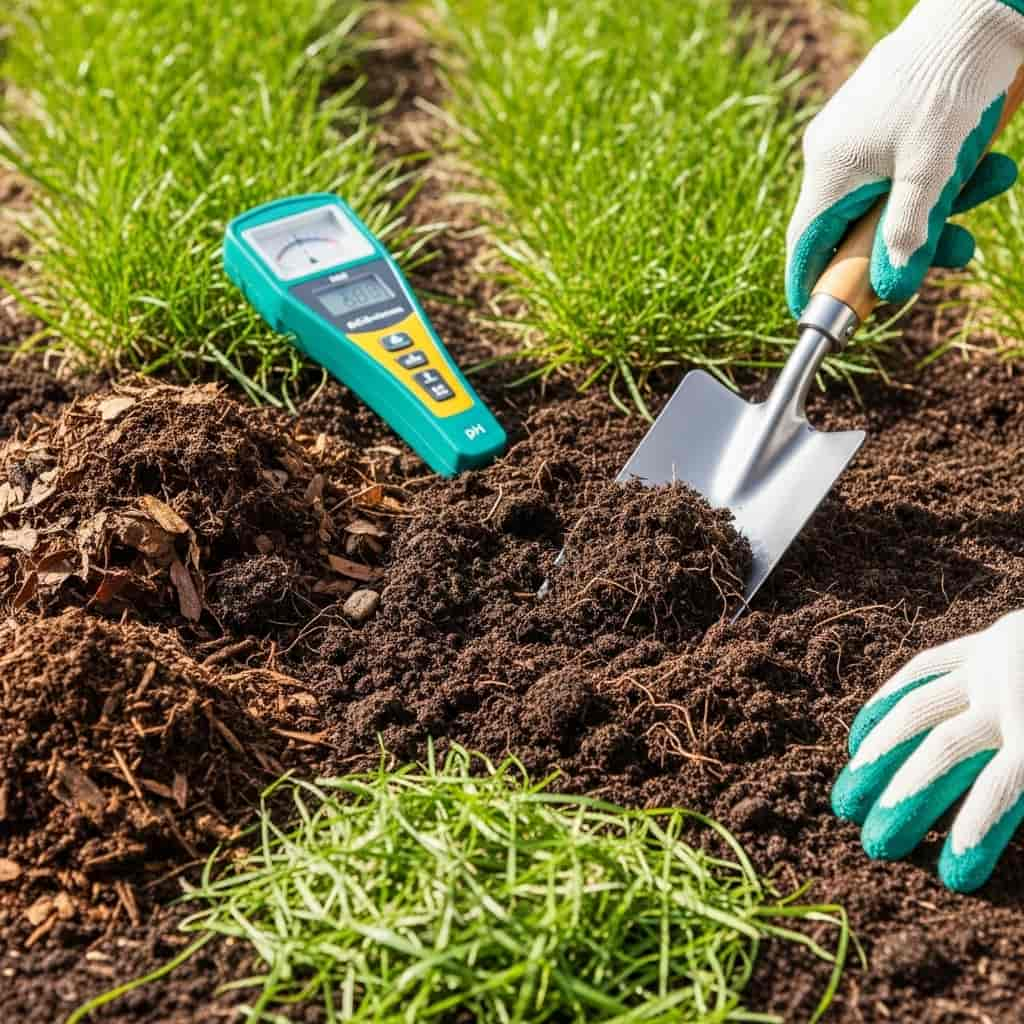
The secret to a naturally green lawn starts beneath the surface—your soil.
Test Your Soil
A soil test reveals pH levels, nutrient deficiencies, and organic matter content. Ideally, lawn soil should have a pH between 6.0 and 7.0.
Improve Soil Structure
If your soil is compacted or clay-heavy, aeration helps oxygen, water, and nutrients penetrate deeper. Adding organic matter such as compost improves texture and fertility.
Feed the Soil, Not Just the Grass
Instead of synthetic fertilizers, use organic options like:
- Compost
- Grass clippings
- Aged manure
- Leaf mulch
These feed the soil microbes that, in turn, feed your grass.
Step 2: Choose the Right Grass for Your Region
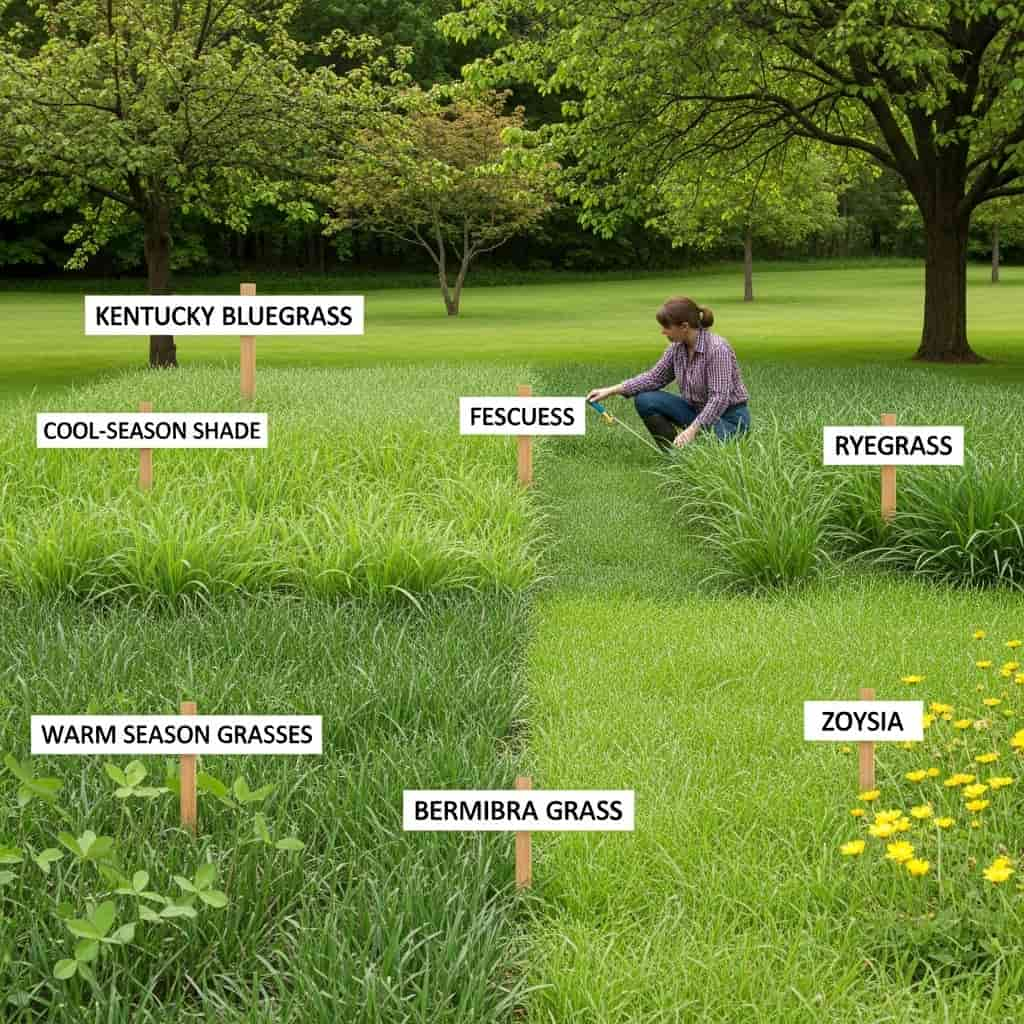
Different climates support different grass types. Selecting the right grass ensures resilience and natural growth.
Cool-Season Grasses (Best for cooler regions)
- Kentucky Bluegrass
- Fescue
- Ryegrass
Warm-Season Grasses (Best for warmer climates)
- Bermuda Grass
- Zoysia Grass
- St. Augustine Grass
Native Grasses
Consider native grass species—they require less maintenance, water, and fertilizer.
Step 3: Watering the Right Way
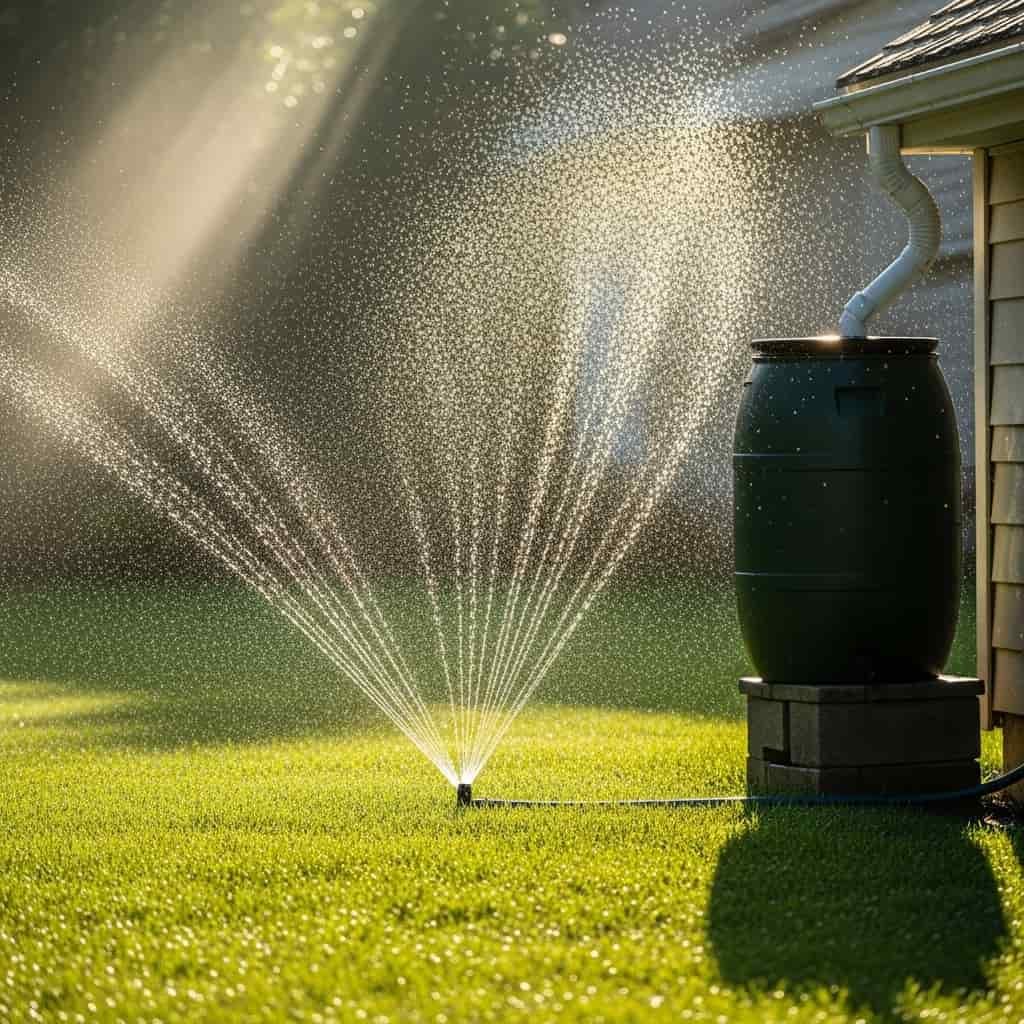
Overwatering and underwatering are common mistakes. Proper watering encourages deep roots, which is essential for a naturally green lawn.
- Water deeply, not frequently – About 1 to 1.5 inches per week.
- Morning is best – Watering between 6 a.m. and 10 a.m. reduces evaporation.
- Use rain barrels – Collect rainwater for a free, natural water source.
Healthy roots mean healthy grass, even in dry spells.
Step 4: Master Mowing Techniques
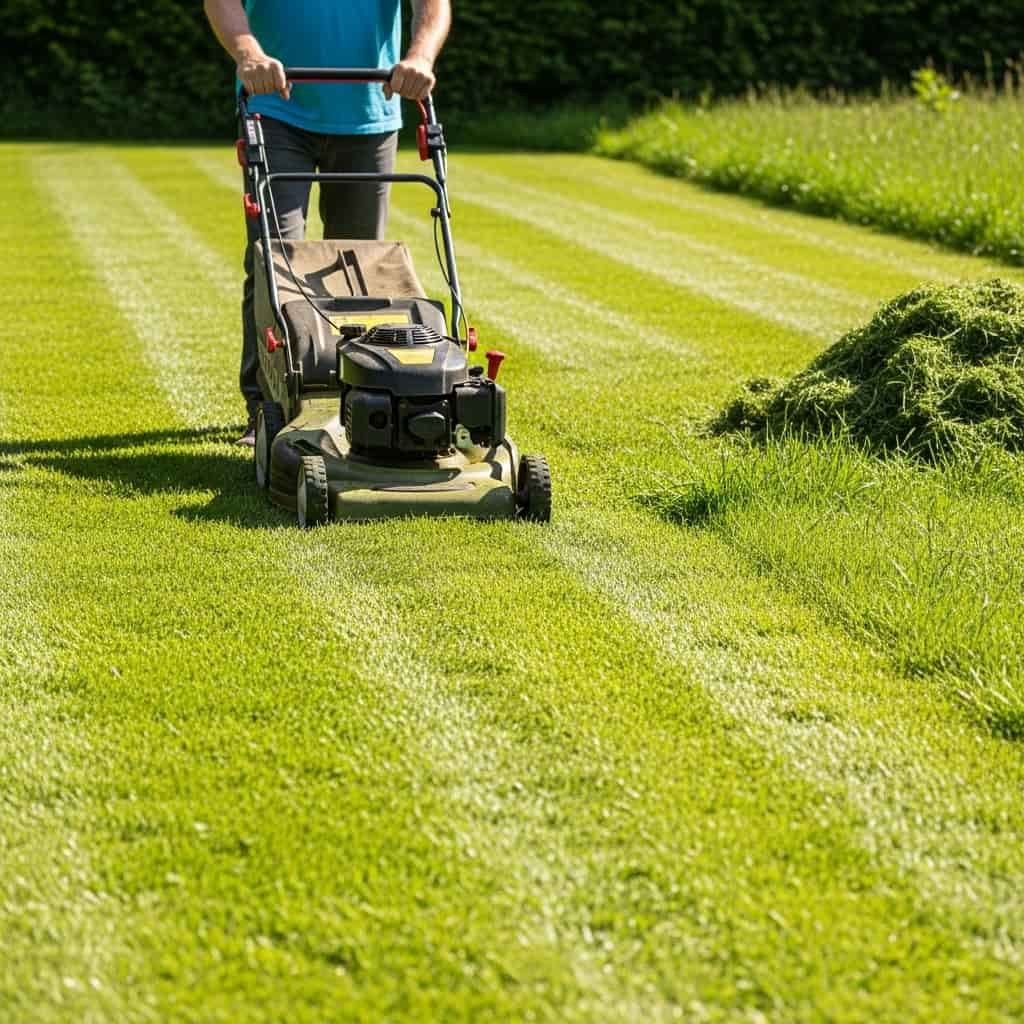
Mowing isn’t just about appearance—it directly affects lawn health.
- Set mower height correctly – Keep grass around 3–4 inches tall. Taller grass shades the soil, reducing weeds and retaining moisture.
- Mow often but not too short – Cutting more than one-third of the blade stresses grass.
- Leave grass clippings – They decompose and provide natural nitrogen.
Step 5: Natural Fertilization
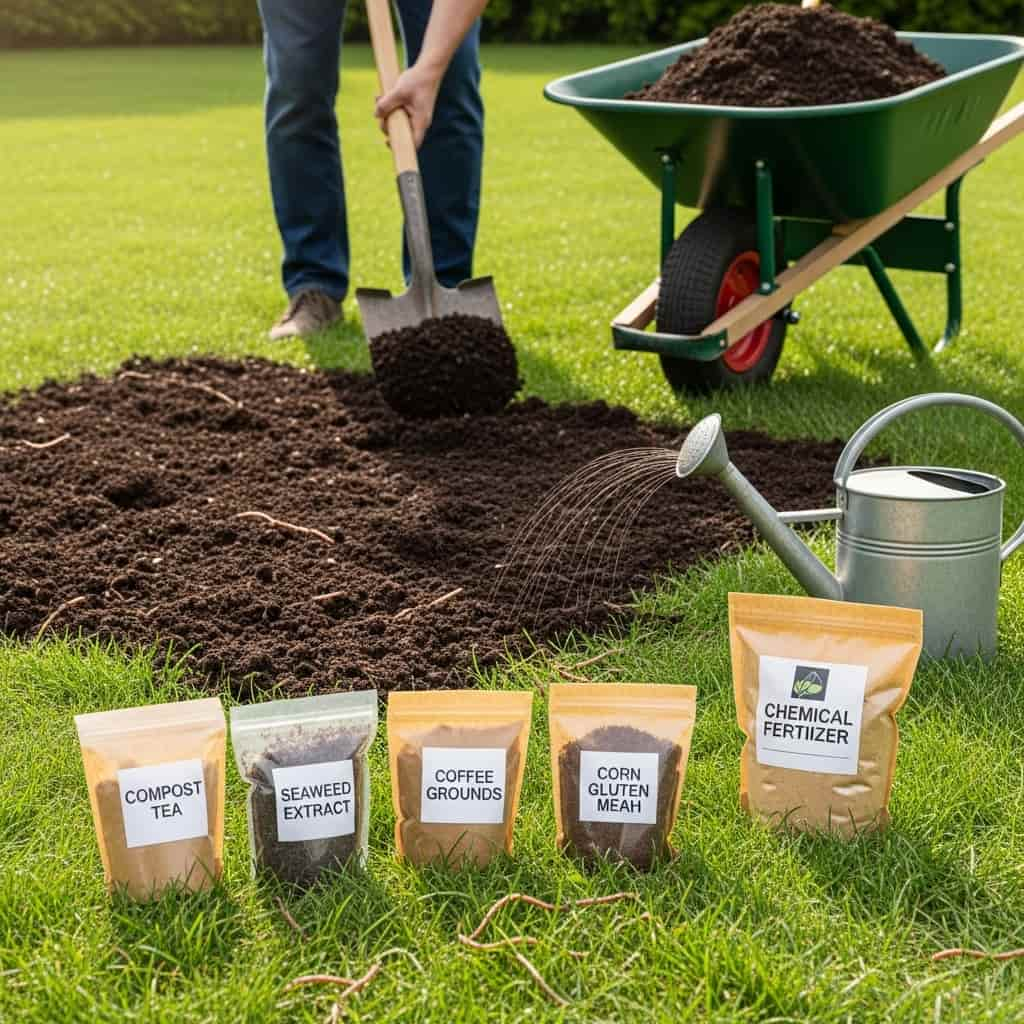
Instead of chemical fertilizers, nourish your lawn with organic alternatives.
Best Natural Fertilizers for Lawns
- Compost tea – Boosts microbial life.
- Seaweed extract – Rich in micronutrients.
- Corn gluten meal – Works as a natural pre-emergent herbicide.
- Coffee grounds – Add nitrogen and improve soil structure.
These options improve long-term lawn health without synthetic chemicals.
Step 6: Weed Control Without Chemicals
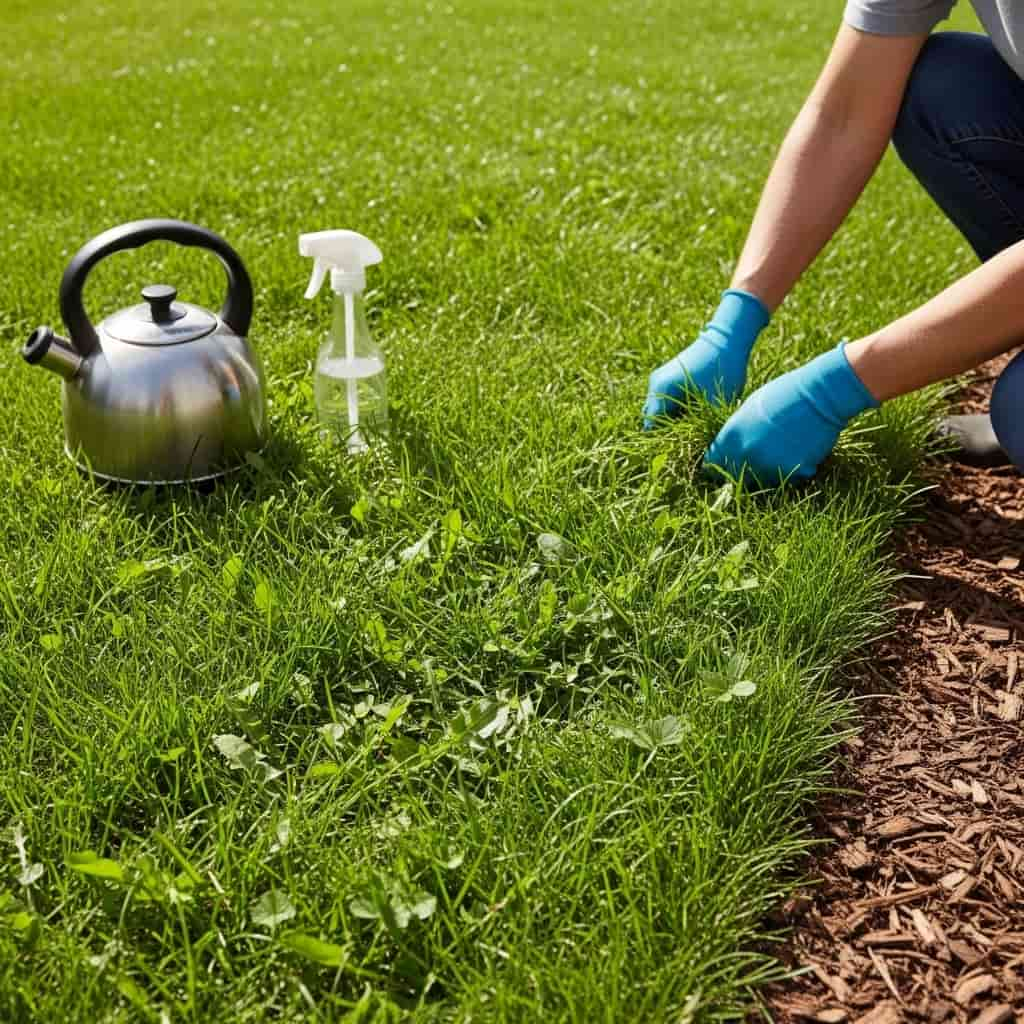
Weeds compete with grass, but harsh weed killers harm soil life. Natural solutions keep weeds at bay while maintaining balance.
Tips for Natural Weed Control
- Maintain healthy grass density – Thick lawns leave little room for weeds.
- Hand-pulling – Effective for small patches.
- Boiling water or vinegar – Natural ways to spot-treat weeds.
- Mulching edges – Prevents weeds from spreading into your lawn.
With consistent care, weeds will reduce naturally as your grass strengthens.
Step 7: Aeration and Overseeding
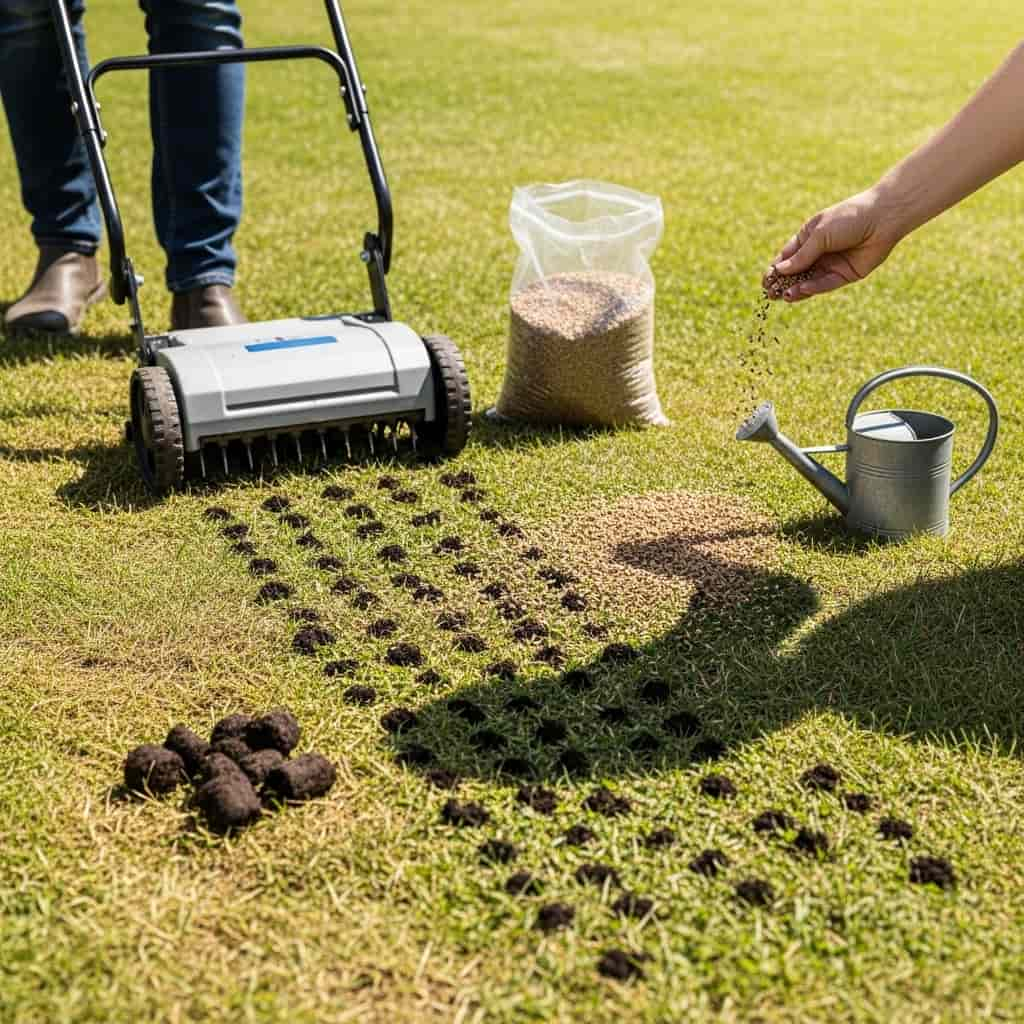
Aeration relieves soil compaction, improving oxygen and nutrient flow. Overseeding fills bare spots, creating a dense, lush lawn.
- When to aerate: Once a year, in spring or fall.
- How to overseed: Spread seeds evenly after aerating, then water lightly until established.
Overseeding also helps prevent weeds by thickening grass coverage.
Step 8: Lawn Pest Management Naturally
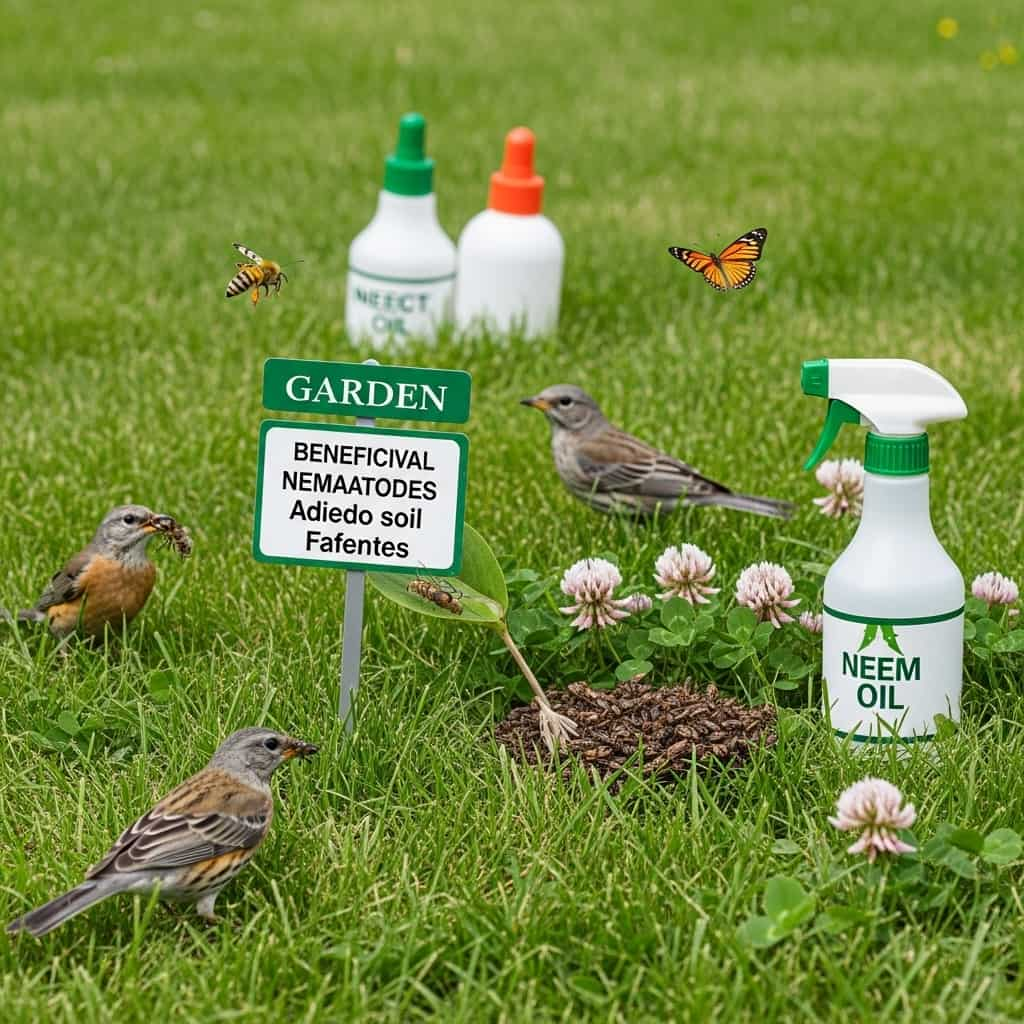
Pests like grubs, ants, and chinch bugs can damage lawns, but chemical pesticides often harm beneficial insects too.
Natural Pest Control Options
- Beneficial nematodes – Attack grubs in the soil.
- Birds and pollinators – Attracting natural predators keeps pests in check.
- Neem oil – A safe, natural pesticide for lawn insects.
Balancing pest control ensures your lawn ecosystem thrives.
Step 9: Seasonal Lawn Care
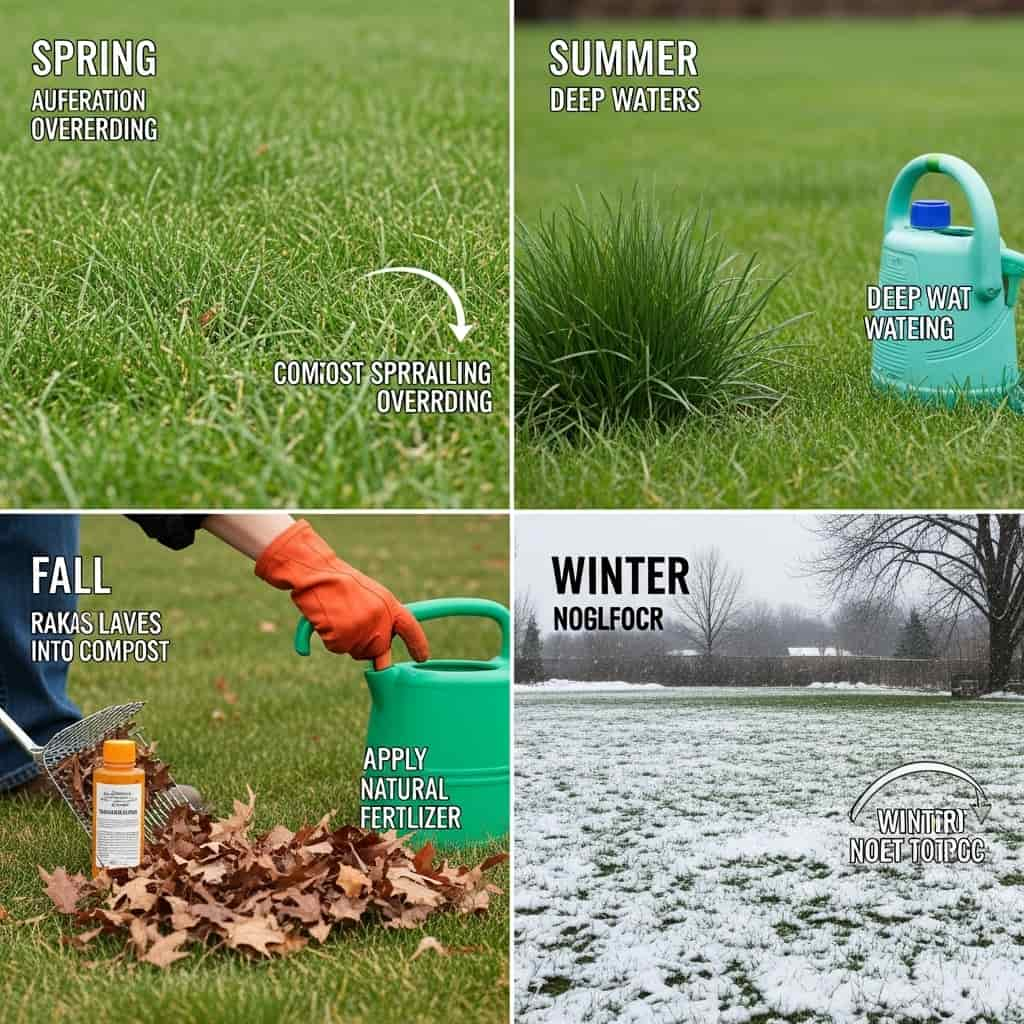
Lawn needs vary with the seasons. Adjusting your care routine ensures year-round greenness.
Spring
- Aerate soil.
- Apply compost.
- Overseed thin areas.
Summer
- Water deeply.
- Keep grass slightly longer to protect roots.
- Avoid heavy fertilization.
Fall
- Rake leaves into compost.
- Apply natural fertilizers.
- Overseed for next year’s growth.
Winter
- Limit traffic on frozen grass.
- Plan for spring care.
Step 10: Long-Term Lawn Care Habits
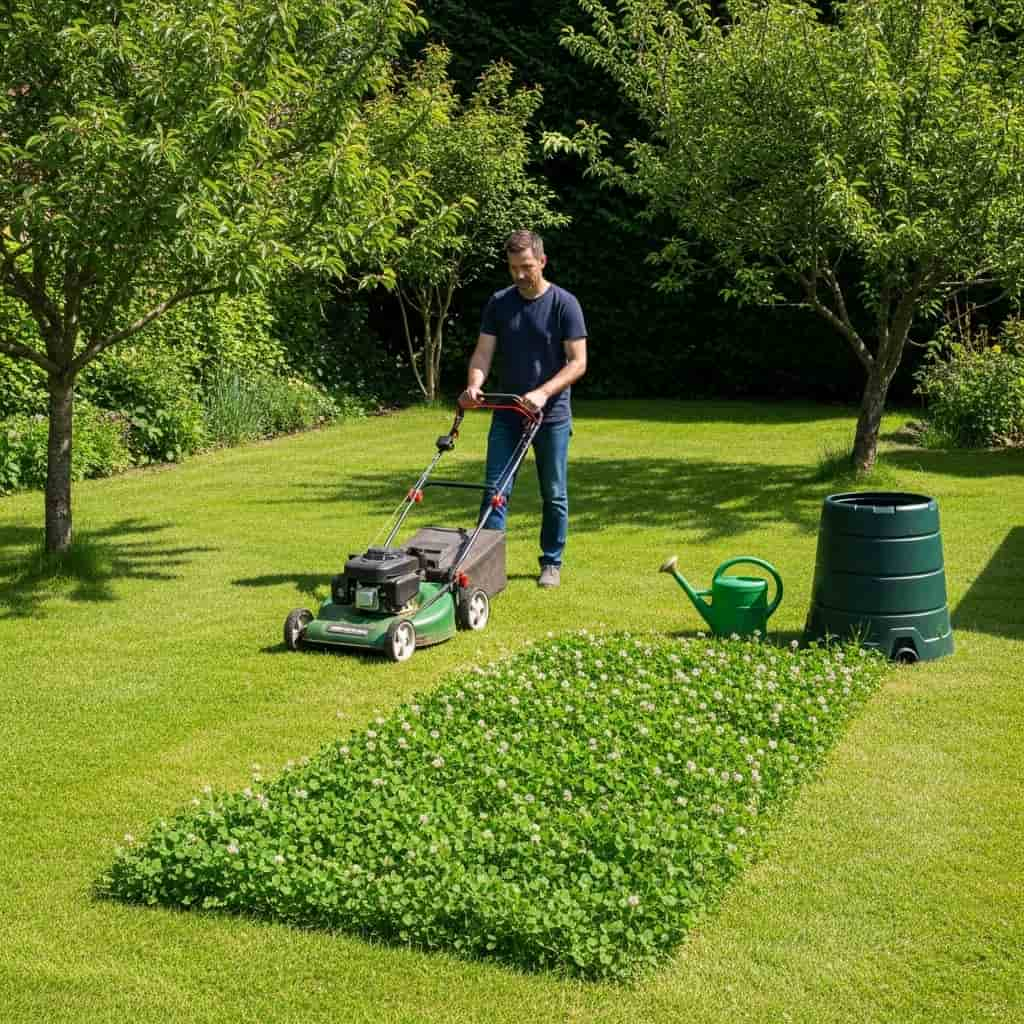
Building a naturally lush lawn is about consistency. A few long-term habits ensure lasting results.
- Rotate mowing patterns to avoid soil compaction.
- Add organic matter yearly to boost fertility.
- Encourage biodiversity by planting clover or ground covers alongside grass.
- Avoid chemical quick fixes—they weaken natural soil balance.
Common Mistakes to Avoid
Even with the best intentions, homeowners sometimes sabotage lawn health. Here are mistakes to avoid:
- Over-fertilizing, which burns roots.
- Watering daily in small amounts, which encourages shallow roots.
- Cutting grass too short (“scalping”).
- Ignoring soil pH balance.
By avoiding these errors, you’ll set your lawn up for lasting success.
Benefits of a Naturally Green Lawn
A naturally maintained lawn offers more than beauty—it benefits your home and environment.
- Improves air quality – Grass traps dust and absorbs carbon dioxide.
- Reduces heat – Lawns are cooler than concrete, lowering home cooling costs.
- Boosts property value – A lush lawn increases curb appeal.
- Provides a safe play area – Children and pets can enjoy the outdoors safely.
Statistics and Facts
- Healthy lawns can absorb up to six times more rainfall than farm fields, reducing runoff.
- Grass-covered lawns are 30°F cooler than asphalt surfaces.
- A dense lawn of 50 square feet produces enough oxygen for a family of four daily.
These numbers highlight the importance of a healthy, natural lawn.
Conclusion
Learning how to get a lush green lawn naturally takes time, patience, and dedication. Instead of chasing instant results with chemicals, focus on building soil health, watering wisely, mowing correctly, and using natural fertilizers. Over time, your lawn will reward you with vibrant green growth, resilience against pests, and an eco-friendly outdoor space that benefits your family and the planet.
A lush lawn isn’t just about looks—it’s about creating a living ecosystem in your backyard. With the right care, your lawn can stay green, healthy, and naturally beautiful year after year.






More Stories
How To Style A Coffee Table For Every Home
How to Decorate Your Home for Christmas Like a Pro
15 Easy Steps to Build a DIY Pergola: A Complete Homeowner’s Guide